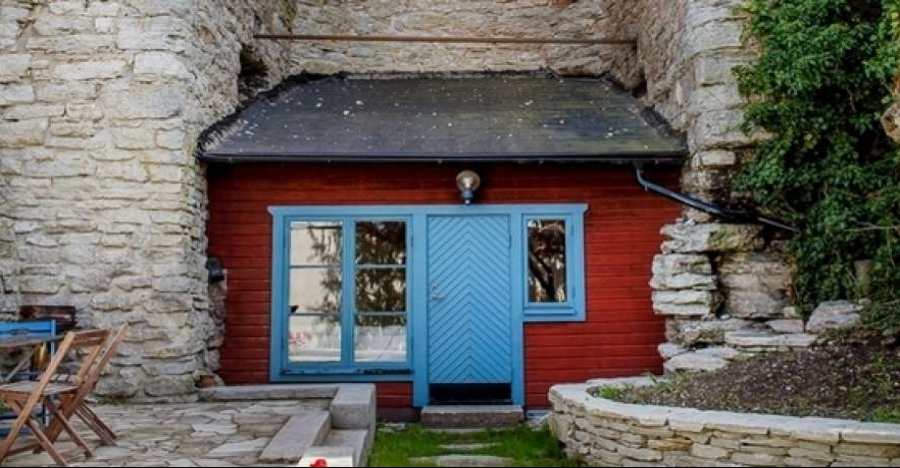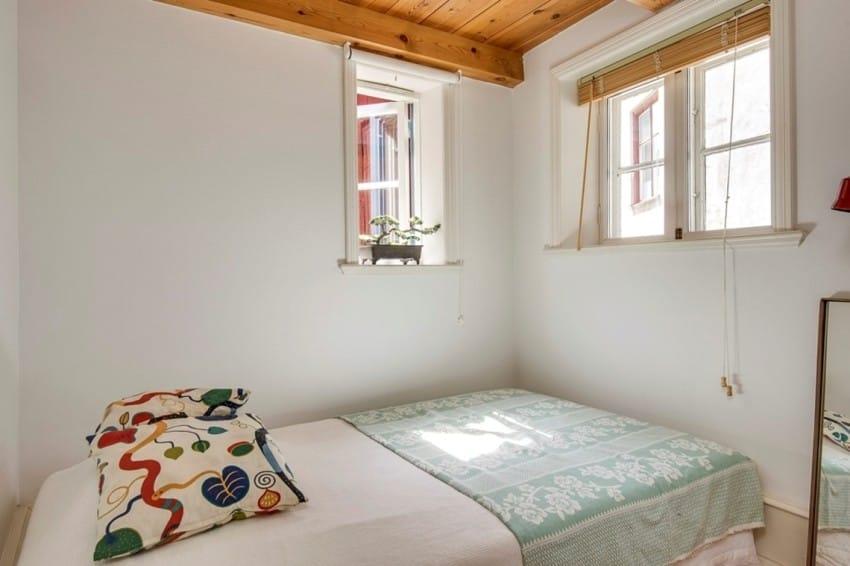An Inspiring Interior Built Into a Medieval Wall in Sweden

There is nothing quite like this unique tiny house building set into a historic building.
This little red house in the Swedish town of Visby is part of something on a much larger scale. The building dates back to the late 17th century, with the wood cabin and its outhouses built into the town’s medieval walls that feature soaring stone battlements as its backdrop. The tiny house building measures 540 square feet, with a single storey house that has two mezzanine sleeping areas that are tucked above an open-plan living room and a tiny kitchen. Shop Tiny Homes Outside the tiny house building are gardens that are set within the old walls of the building. The tiny house building was for sale a couple of years ago, and the listing said that the home belonged to the area’s executioner back in the 18th century. Today, this unique small house plan would better serve as a holiday or vacation home.
Inside the charming small cottage home, you will find high wooden ceilings, wooden floors, wooden kitchen cabinets, and white walls.
The tiny kitchen has a full-size fridge and stove, with plenty of kitchen counters to prepare meals. The tiny house building has a main floor with an open floor plan with kitchen/dining area/living area. There is an outdoor stone patio that provides the perfect place to enjoy the view. The small cottage home also has a nice sized backyard to enjoy some green space in its historic surroundings.
This unique small cottage house is a good example of Scandinavian design.
The following are just some of the tips that will help you achieve the look. Lighting. With as little as seven daylight hours in the colder winter months, the way lighting is used in the design is one of the main features associated with Scandinavian interior design. Interiors have a variety of types of lighting to provide adequate and mood illumination. You might find industrial lighting, with lighting pendants such as the iconic Danish Design pendant lamp from Louis Weisdorf all the way to wall sconces. Candlelight is also popular, adding a touch of warm light and whimsy to the design. You'll find cafes with votives, while home designs keep candelabras lit on the dining tables and window sills.
Neutral Colors.
The color palette associated with Scandinavian designs includes whites, blacks, grays, and browns that are often interwoven to create a clean and calming look. Designers of Scandinavian design also use other pops of color to include rich sea greens and dusty pinks for added accents. In Scandinavian spaces, you'll find walls are kept white to allow the furniture and art to stand out. Clutter-Free Interiors. One of the characteristics of Scandinavian interior design is spaces that have limited unnecessary clutter. Storage is wisely incorporated into the design in the form of cabinets and shelving. There is a less is more attitude when it comes to the decor, by keeping spaces looking clean and visually relaxing. Limited Window Treatments. Scandinavian spaces tend to leave their windows bare of any coverings, and if any are used, light fabrics such as linen and sheer fabrics are preferred. At night, you'll find the glow of illuminated windows in Scandinavian buildings that look like a beautiful postcard.
Photo Gallery








































